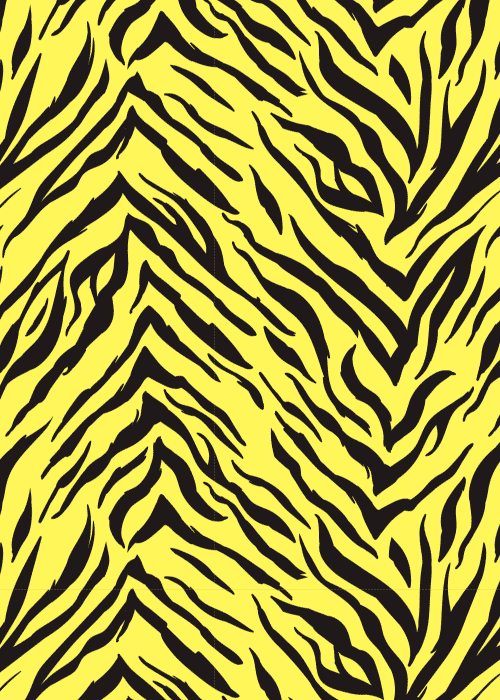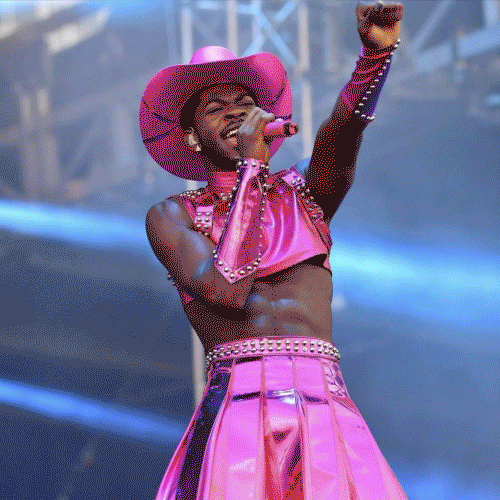Queer Picture NEWSPAPER Revival Set to Display at Murmur
COURTESY OF PICTURE NEWSPAPER
In March, a small exhibition at Murmur will consider the history of Picture Newspaper; an anonymous queer newspaper originally conceived in New York City by Peter Hujar and Steve Lawrence. The publication, which originally ran from 1969 to 1971, celebrated the early work of Hujar alongside Andy Warhol and Diane Arbus among others.
Marcelo Yáñez, a young art historian, gay activist and archivist at NYU, discovered the publication in the closet of Danny Fields, of untold punk fame, and began to extensively research its history. He subsequently elected to recreate the publication, championing contemporary, transgressive queer and trans photography, including artists such as Elle Perez, Bryson Rand, Mark Fitton and Hobbes Ginsberg among many others.
Mo Costello, Photography Fellow at the Lamar Dodd School of Art at UGA, reached out to Yáñez about pursuing an Atlanta exhibit and contemporary Southeast iteration for Picture Newspaper.
WUSSY recently spoke with Costello about the collection and upcoming exhibit:
D'ANGELO LOVELL WILLIAMS
How did you come across the work Marcelo was doing with Newspaper?
When I was living up North I had the opportunity to attend the Printed Matter NY Art Book Fair, the genius of A.A. Bronson. It was my first, and only time, and I arrived late. As a consequence, the little time I had was spent running up and down the stairs in an effort to see everything, ecstatic really. A beautiful thing. This year, without the means to return to the city, I resorted to participating vicariously, through friends. One of whom, intuitively it seems, generously passed along an image of Marcelo’s table.
I suppose the work Marcelo was doing resonated deeply in part because of the circumstances in which I found myself. Having recently re-located, I was relatively isolated. At the end of a relationship. And in the presence of profound longing. Where as normally I might distract myself, seeking temporary relief from the burden of loneliness at the odd bar, pool hall or night club, discovering these places takes time. In their absence, images, and specifically, this collection of images, offered evidence of community, of a collective of some kind. And of far away angels. And in so doing it promised, something else, somewhere else.
At some point, shortly after I reached out to Marcelo, he introduced me to the writing of José Esteban Muñoz. This was both generous and generative. A writer, important to many, that passed relatively recently, Muñoz speaks at length to the utopian nature of our longing. He urges us, “to look beyond a narrow version of the here and now on which so many around us who are bent on the normative count”. We must, he insists, continually seek “something better, something dawning”. That which is, “fuller, vaster, more sensual, and brighter. From shared critical dissatisfaction we arrive at collective potentiality.”
It is this longing, this desire for another world. One that is kinder, that encourages connection, that provides places in which we might gather (‘they say there are valleys, fields’) that Newspaper, however tenuously, proposes.
PACIFICO SILANO
What can we expect from the exhibition at Murmur? Will it be a showcase of the classic Newspaper imagery or from the reincarnation?
All of the above!
Newspaper originally came into being during Stonewall, a moment in time that was marked largely by anti-government sentiment and, well, similarly utopian longings. Our hope in showing the two alongside one another is to offer space for reflection. The opportunity to look backwards, with both curiosity and concern, in search of a vision, a new vision, for a collective future. There are ghosts from our past; wandering, wearily, streets that once led to the bars, bathhouses, porn theaters, disco techs and abandoned piers where public sex was acceptable and underground Drag thrived. Ghosts who offer us visions of community and hope for contact between souls on the periphery. Dreams of solitary angels that occasionally became collective nightmares. For these were ghosts who were flawed, ghosts who struggled. As we all are and do. But here in lies the wisdom that can only come from failed visions.
So we call on our queer ancestors, friends and old lovers. And in exchange for story, occasionally cautionary, we offer them dance and song and limitless drink.
Lastly, as part of the exhibition, we have put together a regional edition, featuring queer and transgender image makers for whom the South is home. These will be free, for anyone, everyone. It is about excess, certainly, as much as it is about the importance of loss. Of giving, of losing. Of letting go.
ELLIOTT BROWN AND BRYSON RAND
What do you think separates Southern artists from other artists in other major markets like NYC?
I wonder if it might be more urgent to speak to the things they have in common. Mainly, a need to maintain gathering spaces. Physical structures, local in scale, with committed audiences, such as Murmur and Mammal. Places that offer space for contact, for the maintenance of ritual and the possibility for communion. These are often small, self-funded venues, committed to DIY print, underground punk music, queer programming. Places that are threatened across the country and whose future is precarious, in the South and North alike. One need only conjure the consequences of development in Times Square following the AIDS crisis of the 80’s to understand precisely why we can’t allow this to occur to those few places that still remain in tact.
Here, the writing of Samuel Delaney is particularly insightful if not prophetic:
The Times Square renovation is not just about real estate and economics, however unpleasant its ramifications have been on that front. Because it has involved the major restructuring of the legal code relating to sex, and because it has been a first step not just toward the moving, but toward the obliteration of certain businesses and social practices, it has functioned as a massive and destructive intervention in the social fabric of a noncriminal group in the city - an intervention I for one deeply resent.
If the range of heterosexist homophobic society as a system wants to ally itself to an architecture, a lifestyle, and a range of social practices that eschew contact out of an ever inflating fear of the alliance between pleasure and chaos, then I think it is in for a sad time, far more restrictive, unpleasant, and impoverishing than the strictures of monogamy could ever be.
The Thousands upon Thousands of gay men [italics mine, here I question what places, rituals, existed (and might now exist again) for both woman and the trans community, that is, what history has been excluded and is missing in this record provided by Delaney], contingently "responsible" or "irresponsible", who utilized the old Times Square and like facilities for sex already know that contact is necessary. . . . Necessary for the whole of a flexible, democratic society - and I feel it is only socially responsible to say so.
There is a parallel in Atlanta’s South Downtown. When Underground becomes the target of proposals involving Walmart, parking garages and massive apartment complexes with the promise to ‘bring safety, economic growth, and more visitors to the city’, one can’t help but feel alarmed. How to ensure that this development doesn’t threaten the local residents, history and culture that have grown slowly from within, is a question that deserves care. Successful opposition ultimately demands unprecedented levels of organization to ensure ones community, and the architecture on which it depends, are not eradicated.
How involved is Marcelo in the curating of the Atlanta exhibit?
COURTESY OF PICTURE NEWSPAPER
Very much so. Despite the distance, we are able to maintain dialogue that is both consistent and supportive of one another and the work that needs to be done. None of it would occur without him, nor of course, would there be any Newspaper to speak of. I am there in support and to celebrate work that I believe to be relevant, even urgent, to this moment in time. I question the place of individualism, particularly increasingly, within the arts. Collaboration and dialogue offer a way out.
There seems to be a resurgence of interest in Queer artists and defining the Queer aesthetic. History tends to only credit the work of gay white men as defining this aesthetic, but do you think this is starting to shift?
It has to. There is no place for that kind of narrowness in vision. A vision that is ultimately violent if it fails to be inclusive. Here the work of Julianna Huxtable, Wu Tsang, Zoe Leonard, Kalup Linzy, Elle Perez and Wynne Greenwood, among countless others, all come to mind as particularly potent examples of artists challenging a paradigm of exclusivity that must, and will fail. As room is made for new voices, we will encounter not only new forms but new ways of thinking, being and desiring.
The exhibition at Murmur will take place on March 10th from 7-9pm.
Murmur is located at 100 Broad St SW.
The reception will be followed by an afterparty called BUSTED: A Night of Fugly Drag at The Mammal Gallery, thrown by WUSSY and Legendary Children ATL. BUSTED will feature a cast of local GNC and trans performers.
Archive
- February 2025
- November 2024
- October 2024
- September 2024
- August 2024
- July 2024
- June 2024
- May 2024
- April 2024
- October 2023
- July 2023
- June 2023
- May 2023
- April 2023
- March 2023
- February 2023
- June 2022
- April 2022
- March 2022
- January 2022
- December 2021
- October 2021
- September 2021
- August 2021
- July 2021
- June 2021
- May 2021
- April 2021
- March 2021
- February 2021
- January 2021
- December 2020
- October 2020
- September 2020
- August 2020
- July 2020
- June 2020
- May 2020
- April 2020
- March 2020
- February 2020
- January 2020
- December 2019
- November 2019
- October 2019
- September 2019
- August 2019
- July 2019
- June 2019
- May 2019
- April 2019
- March 2019
- February 2019
- January 2019
- December 2018
- November 2018
- October 2018
- September 2018
- August 2018
- July 2018
- June 2018
- May 2018
- April 2018
- March 2018
- February 2018
- January 2018
- December 2017
- November 2017
- October 2017
- September 2017
- August 2017
- July 2017
- June 2017
- May 2017
- April 2017
- March 2017
- February 2017
- January 2017
- December 2015
- November 2015
- October 2015
- September 2015
- August 2015
- July 2015
- June 2015
- May 2015
- April 2015












